 Some things are too ugly to be prettied up. 
A thriller with two of Ernest Hemingway's granddaughters as stars? We had to check it out, especially when we found this beautiful Japanese promo poster. The movie was titled Lipstick, and the Japanese title リップスティック is identical. Margeaux Hemingway plays a New York City model, and her little sister Mariel Hemingway plays her daughter. They become obsessions for a pig of a sexual predator who insinuates his way into their lives, and things don't go well. At all.
Using rape as the central element of thrillers is not very 2022, even as the actual issue exists in perpetuity. Any film that aims for a realistic depiction, no matter how well meaning, opens itself to charges of exploitation. There's no doubt the filmmakers wanted to wrap an issue inside a thriller, which means despite the beautiful cinematography and a setting in the glitzy, glimmery realm of high fashion, there's a disturbing aura of reality that makes the movie tough to watch in places.
However, this is a serious production and deserves a fair assessment. It's adequately-but-not-amazingly acted by Margeaux, co-star Anne Bancroft is solid, Mariel—who was only fifteen at the time but is playing a character of thirteen, and looks it—does serviceable work, and Chris Sarandon is believable as their assailant. Lipstick falls into the category could-not-be-made-today™, but overall it's worth a watch—and a post-credits discussion. It premiered in the U.S. in April 1976, and in Japan today the same year.
     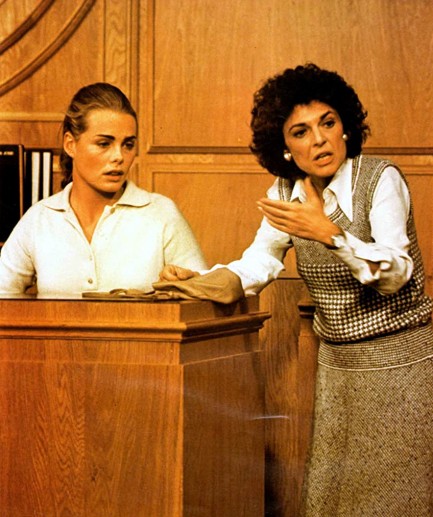 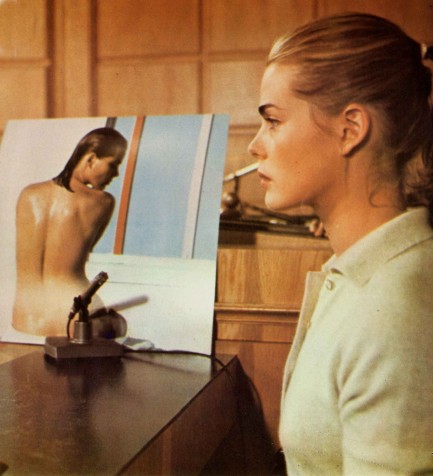 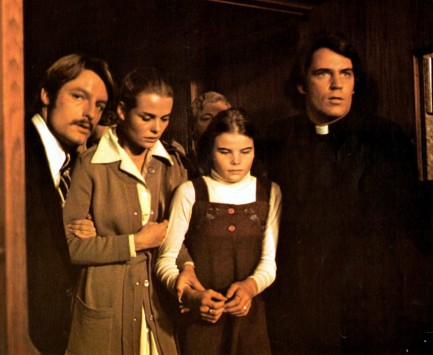 
 Our recommendation is to never mess with the Mafia. 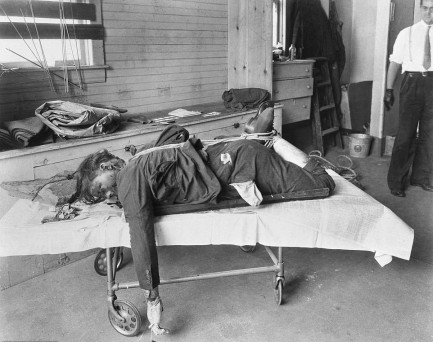
While we're on the subject of mobsters, this photo shows the grisly end of one Walter J. Sage. He ended up in this non-ideal condition after being stabbed more than thirty times, tied to a rock and a slot machine frame, and dumped in Swan Lake, located in Sullivan County, about eighty miles north of New York City. The slot machine aspect was ironic. Sage, a contract killer for the infamous Murder, Inc., also filled his hours by working for a mafia gang that ran a slot machine racket.
Unfortunately, he had a case of sticky fingers and his employers found out. Sage's colleagues took him for a ride north toward the Catskills, a trip they'd made many times. On this occasion they attacked him in the car, one man choking him and the other getting busy with an ice pick. Sage was no pushover. He managed to grab the car's steering wheel and run the vehicle into a ditch, but in the end he was overpowered, killed, hogtied, weighted, and dumped in the lake.
Some accounts claim he was in the water for two weeks, but a glance at the body disproves that. He was found four days later, today in 1937, which is when the photo was shot. It's amazing that a guy who was sent to kill people who had annoyed the mafia would himself annoy the mafia, but as the Dunning-Kruger effect teaches, some people suffer from a cognitive bias of illusory superiority. Or put another way, feeling smart doesn't mean you actually are. Sage could have benefitted from advice along those lines—but he probably wouldn't have listened anyway. 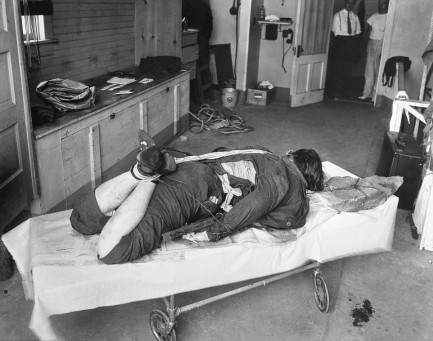
 Sometimes to find yourself you need to lose yourself. 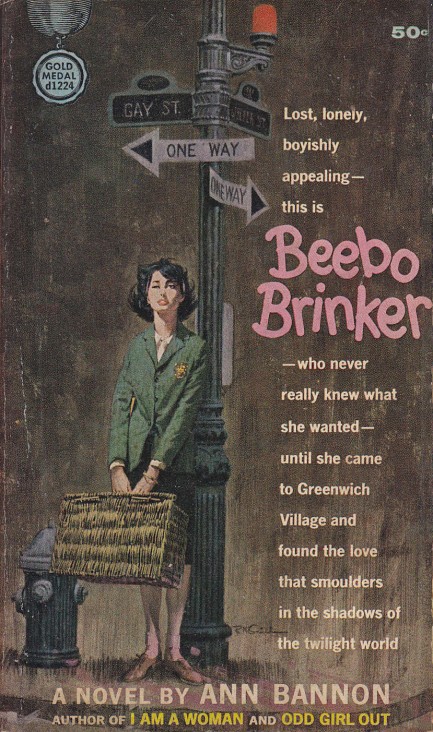
It's probably fair to call Beebo Brinker a legendary novel—or at least a notable one. Last in a series of lesbian themed tales written by Ann Bannon, née Ann Weldy, but written as a prequel to the other books, it came out in 1962 and follows young Beebo as she arrives in New York City's Greenwich Village and quickly becomes the most intriguing and sought after denizen of the local scene, searching for and finding herself with the help of her roommate Jack Mann, and a trio of diverse sexual partners.
Of the three, her true love is Paula Ash, who arrives too soon to hold on to a Beebo bent on exploring her boundaries. Part of that exploration involves following a famous actress named Venus Bogardus to Los Angeles, where she's contracted to star in a television show called Million Dollar Baby (no relation to the Clint Eastwood movie). Having found her way out of the closet in Greenwich Village, in Hollywood Beebo has to go right back in to protect Venus's public persona.
Beebo Brinker is a talky book, melodramatic in parts, and highly romantic as well, which Bannon manages to make work thanks to better than average authorial skills, a good sense of Village life, and of course an excellent feel for her main character. Even so, we can't recommend it for everyone simply because it's a tale of self discovery and those tend to be more compelling for people below a certain age. If you've compiled a lot of life experience you probably won't find Beebo's groping her way to sexual awakening very fascinating. But objectively, it's a good book, and we liked it.
The cover on this Gold Medal edition, if you didn't recognize the style immediately, is by Robert McGinnis, and the image is custom made for the novel, showing Beebo upon her arrival in the Village with a wicker suitcase and no idea where to go, standing on the corner of Bleecker and Gay Streets. If you've spent time in the Village you know that Bleecker and Gay don't intersect in reality, so that was McGinnis taking a little license. His cover is, in all respects, excellent work.
 Reality says she's way out of his league. Entertainment tradition says she isn't. 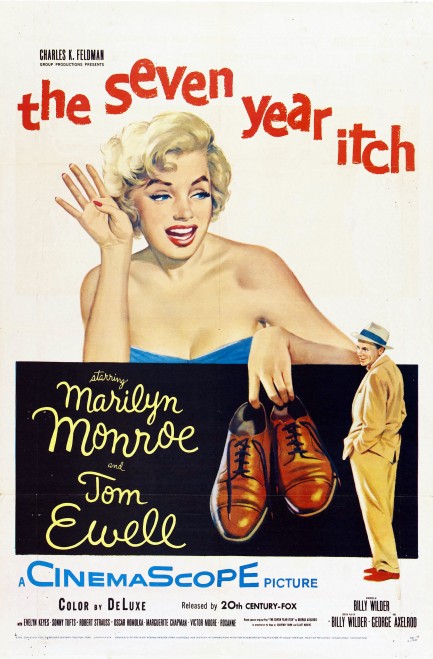
Above you see a poster for the Marilyn Monroe comedy The Seven Year Itch, which we're taking a close look at today because it's a pulp movie. No, really. It isn't a pulp movie in a standard way, but how can we ignore a film, even though it's a comedy, that happens to be about the pulp industry? Perhaps some of you have forgotten this detail, but co-star Tom Ewell plays an editor at a 25¢ publishing house, where among other important duties he repackages literary classics with sexy, good-girl-art covers. If you look just below, Ewell's secretary Marguerite Chapman displays the company's latest reimagining—a racy makeover of Louisa May Alcott's Little Women. They've featured scantily clad women in the art, and added the tagline: “The secrets of a girls dormitory.” So even though thousands of online scribes have written about The Seven Year Itch, its setting in the pulp publishing realm demands that we discuss it too. 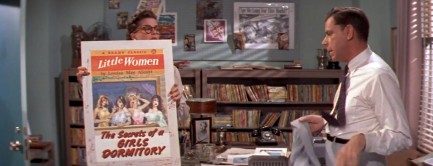 But of course, pulp is merely the backdrop; the movie is really all Monroe. We know it comes across as anachronistic to some viewers, but this film is completely modern in at least one important way. The trope of a schlubby everyman scoring with—or at least turning the head of—a woman much more beautiful than him is still a linchpin of American entertainment. Let us count the examples: There's Something About Mary, Big Bang Theory, King of Queens, She's Out of My League, Night Shift, Forrest Gump, Bewitched, Superbad, Knocked Up—in fact, anything with Seth Rogen in it—and not to be forgotten, both Beauty and the Beast and Lady and the Tramp. In all of those, the female love interest, whether human or cocker spaniel, is objectively too beautiful for the lead male. It's a trope that has always worked, and probably always will because it's primarily males who are marketed to in cinema and television.
In The Seven Year Itch the hot girl/ugly guy theme is doubly funny because Ewell's wife is played by Evelyn Keyes, and she's supposed to be, we guess, not out of Ewell's league. Uh huh. Hollywood, right? Keyes is plenty hot, though of course she's no Monroe. Cue eyeroll from our girlfriends. They aren't clear on why so many men find Marilyn attractive. To them she's a little fat, which is no surprise from the perspective of our pint-sized better halves, but the weight of actresses varied greatly during the mid-century era, from the zaftig Jayne Mansfield to the reedy Audrey Hepburn. Marilyn was somewhere in the middle of the voluptuous range—i.e. not fat. However, her weight did fluctuate. In Something's Gotta Give she was thin enough to be about perfect for current sensibilities. She made any level of poundage look good though, because, first and foremost, she was impossibly cute. This look right here: 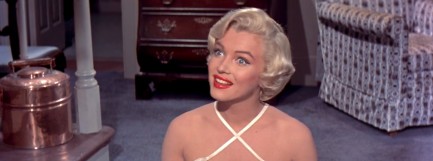 Those blue eyes of hers that are pointed in slightly different directions. That's hot. That look also captures Monroe's go-to instrument as an actress—an expression that conveys an expectant, scrubbed, and somewhat (but never totally) naive sex appeal. Having watched her dramas as well as her comedies, there's no doubt her gift was for the latter. Her comedies are unimaginable without her, and she was in her own class. Bardot played the same kittenish character at times, and Demongeot, and other actresses, but Marilyn was simply the best. The Seven Year Itch showcases an eternal star shining her brightest, as she plays a twenty-something aspiring actress who moves in upstairs from the klutzy Ewell, whose wife is away for the summer. Monroe proceeds to unknowingly fuel all sorts of male fantasies that—surprise—start to come true, as the lack of air conditioning in the upstairs flat has her increasingly avoiding it in favor of Ewell's. Those blue eyes of hers that are pointed in slightly different directions. That's hot. That look also captures Monroe's go-to instrument as an actress—an expression that conveys an expectant, scrubbed, and somewhat (but never totally) naive sex appeal. Having watched her dramas as well as her comedies, there's no doubt her gift was for the latter. Her comedies are unimaginable without her, and she was in her own class. Bardot played the same kittenish character at times, and Demongeot, and other actresses, but Marilyn was simply the best. The Seven Year Itch showcases an eternal star shining her brightest, as she plays a twenty-something aspiring actress who moves in upstairs from the klutzy Ewell, whose wife is away for the summer. Monroe proceeds to unknowingly fuel all sorts of male fantasies that—surprise—start to come true, as the lack of air conditioning in the upstairs flat has her increasingly avoiding it in favor of Ewell's.
The way the script is built, with each encounter between Monroe and Ewell another line on the way to potential infidelity is crossed, until the crossed line becomes literal when Monroe discovers that the apartments—which had once been a single two-level residence—are reconnectible by pulling some nails out of the floor where a staircase had been closed off. The possibility of actually living with Marilyn is a delicious dilemma, ingeniously lifted right out of the male id by director/writer Billy Wilder and co-writer George Axelrod. The movie obviously isn't totally wonderful. Some see it as sexist, and certainly its opening sequence of actors painted up like a native American tribe is pure minstrelry, but just like people, movies can harbor out-of-date ideas without being malicious. As long as that line isn't crossed, we can appreciate both The Seven Year Itch, and how far we've progressed since it was made. It premiered today in 1955, and you can see a couple more excellent posters here and here.  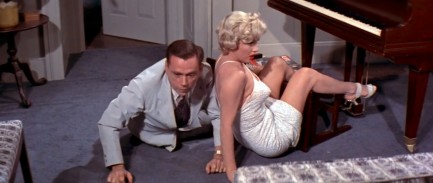  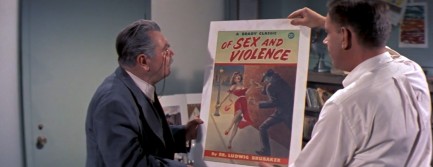  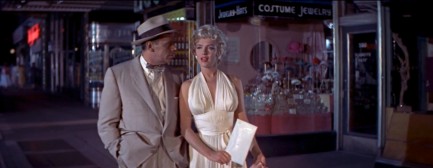 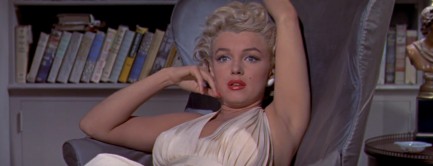  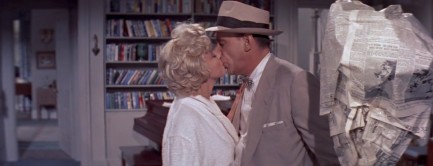 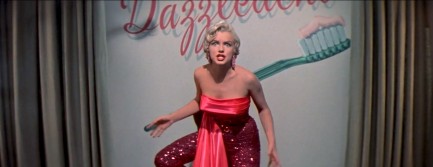 
 This version is for adults only. 
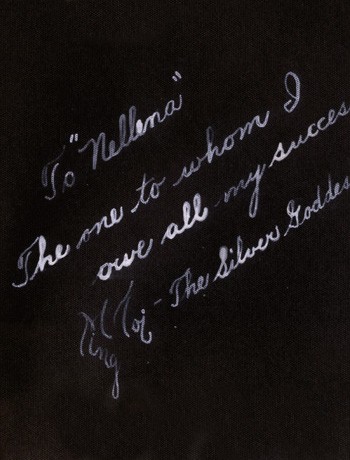 Like most burlesque dancers Noel Toy had several nicknames and alter egos, including the Chinese Sally Rand, but this promo image is signed: Ming Toi – The Silver Goddess. Toy/Toi was actually born Ngun Lee in San Francisco in 1918, and was a journalism student at UC Berkeley when she took a job dancing during the Golden Gate International Exposition, a Bay Area version of the World's Fair held in 1939. That decision changed her life. Like most burlesque dancers Noel Toy had several nicknames and alter egos, including the Chinese Sally Rand, but this promo image is signed: Ming Toi – The Silver Goddess. Toy/Toi was actually born Ngun Lee in San Francisco in 1918, and was a journalism student at UC Berkeley when she took a job dancing during the Golden Gate International Exposition, a Bay Area version of the World's Fair held in 1939. That decision changed her life. Having tasted the bright lights of show business, Toy ditched university and took a job at the famed Frisco club Forbidden City, gaining national attention and developing a fan dance that brought about the Rand comparison. As her star rose she performed at many of the top clubs around the U.S., including the Stork Club in New York City, appeared in magazines, and made the inevitable contacts in the world of cinema. In 1951 she made the leap to the bgi screen with an uncredited role in Anne of the Indies, and thereafter acted mostly on television shows, including Columbo, Police Woman, and four episodes of M*A*S*H*. We don't have an exact date for this rare and awesome Silver Goddess shot (yes, we know she looks more like gold, but who are we argue with her self-chosen nickname?), however it's probably from around 1940. A couple more images appear below.
 I agree we should put off getting married. For one thing, we'd both have to get divorces first. 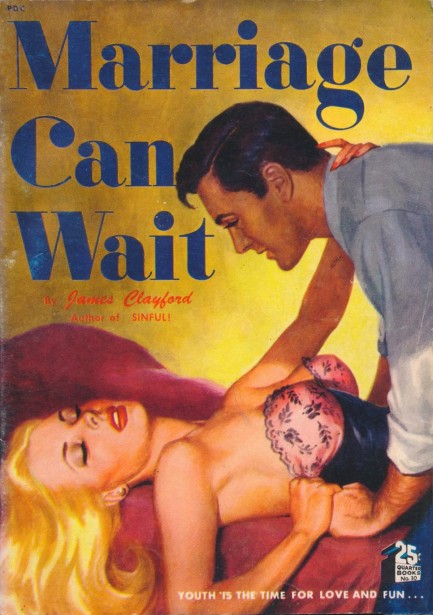
We've said it before—you never what you're going to get when you buy vintage paperback digests. The cover art, as in the case of James Clayford's 1949 novel Marriage Can Wait, often has nothing to do with the content. This looks straightforward but it's one of the stranger tales you'll come across. It was written by Peggy Gaddis under her Clayford pseudonym, and it's about a hard partying yacht trip from New York City to Jacksonville, peopled by six jet-set types and one everyman named Tony Ware. As the only unwealthy person aboard aside from the crew, Tony takes it badly when the yacht's owner Elaine Ellison jilts him one night. She'd invited him to her cabin for nocturnal fun, but he arrived to find another man there. In embarrassment and disgust he jumps overboard and swims ashore. He thinks he's swimming to the Florida mainland. He actually ends up on an island nudist colony. He's horrified, but since supply boats come only once a month the only way he can eat is to doff his garments and join the colony. And it's there that he finds true love in the form of Eve Darby.
Tony's yachting pals, who are habitually hungover each day, assumed he'd abandoned them in port one morning and they'd simply slept through it. Nobody is concerned except Elaine, who realizes she behaved terribly toward him. Weeks later they sail to the nudist island thanks to a bizarre subplot that has them half-jokingly searching for Blackbeard's buried treasure. They don't know the place is inhabited, but they soon find out, and can only stay if they agree to become nudists, which Elaine and her five idle rich friends do in order to secretly search for the treasure. They of course find the long lost Tony, and Elaine is ashamed at how she treated him, then smitten as she realizes she loves this newly bronzed hunk. The only way to try and win him over is to stay at the colony—plus the treasure might be there too—so she settles in for an extended nude sojourn. We'll stop the synopsis there except to say that you have to give Gaddis major points for creativity. The cover art, by the way, is uncredited.
 Mafia gunmen make a mess of Masseria. 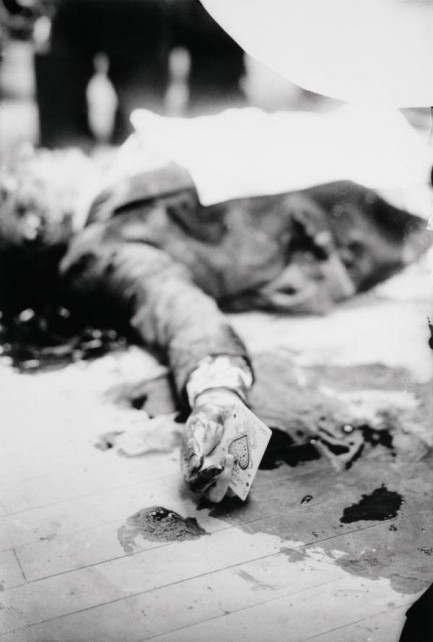
As artistic crime photos go, this shot of Giuseppe Masseria's corpse on the floor of Villa Tammaro, a seafood restaurant in Coney Island run by mobster Gerardo Scarpato, ranks highly. During the 1920s Masseria was the head of what later became known as the Genovese crime family. He was involved in a power struggle with another crime group run by Salvatore Maranzano, but at the same time there were tensions within Masseria's group because he was an old world, old school mobster who refused to work with non-Italians, and thus was leaving millions of dollars in criminal profits unclaimed. One of the young mafiosi in his clan who thought Masseria was an old-fashioned fool was Charles Luciano, aka Lucky Luciano. Tensions between Masseria and Luciano eventually devolved into open hostilities.
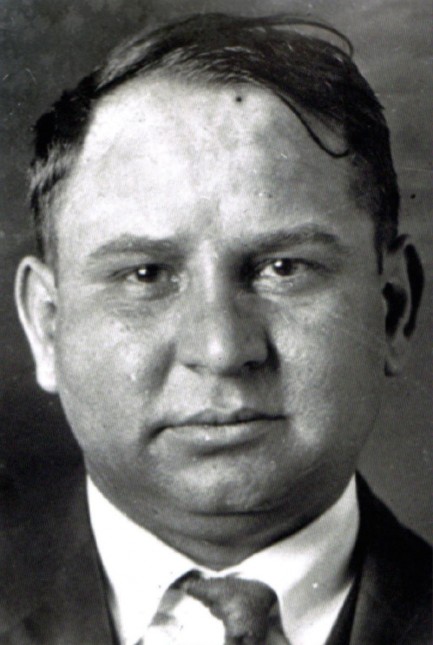 Masseria was a careful guy. He traveled in an armored sedan. But it's hard to take care of business from behind plate steel and bulletproof glass, so when Luciano invited him to a meeting at Villa Tammaro that promised to tamp down intra-clan tensions and refocus everyone on Salvatore Maranzano, the real enemy, he took the chance. He went to the restaurant, and the confab must have gone cordially up to a point, because Masseria, Luciano, and a couple of other men began playing cards. But at some point Luciano excused himself from the table and Masseria was gunned down by a fearsome foursome of Albert Anastasia, Vito Genovese, Joe Adonis, and Bugsy Siegel. Masseria was a careful guy. He traveled in an armored sedan. But it's hard to take care of business from behind plate steel and bulletproof glass, so when Luciano invited him to a meeting at Villa Tammaro that promised to tamp down intra-clan tensions and refocus everyone on Salvatore Maranzano, the real enemy, he took the chance. He went to the restaurant, and the confab must have gone cordially up to a point, because Masseria, Luciano, and a couple of other men began playing cards. But at some point Luciano excused himself from the table and Masseria was gunned down by a fearsome foursome of Albert Anastasia, Vito Genovese, Joe Adonis, and Bugsy Siegel.
There were a few other skirmishes for control, but essentially, taking Masseria off the board was the beginning of the end of hostilities. One more old school kingpin had to go—Maranzano, who had been communicating secretly with Luciano and had offered a deal of peace in exchange for Masseria's death. Months later Luciano took care of him too. With Masseria and Maranzano gone, the new mafia was restructured, modernized, and began working with non-Italians. Many accounts of Masseria's killing say he died at dinner, and while that's technically true, the autopsy showed that he had eaten nothing. Maybe he was afraid of being poisoned. Though cards had been scattered around the room in the chaos, the ace of spades was probably placed in his hand by a photographer. That was today in 1931.
 She's an acquired taste. 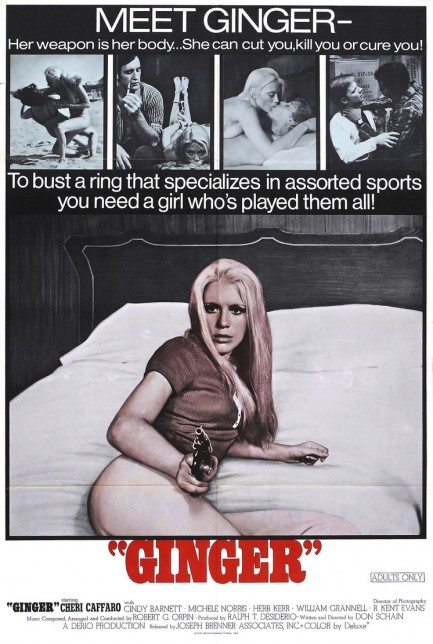
A while back we stumbled upon a low budget action-sexploitation flick called Girls Are for Loving starring Cheri Caffaro. It was part of a trilogy, the first of which was Ginger, for which you see a promo poster above. The movie premiered this month in 1971, and also starred Caffaro, who was one of the bolder actresses of ’70s sexploitation cinema. She plays a New York City socialite recruited to bust a New Jersey drug ring. She's given a few tools to help in her mission, but her main advantage is of course her slinky bod, which she uses at every turn. This is a really bad movie, the type of production where the dialogue is so stilted you'll think time has begun to flow backward, while the equally clunky action moves so slowly it might as well be stop-motion.
But we'll admit that the movie has an underdog quality, as less-than-talented writers, less-than-experienced technical personnel, a far less-than-competent director, and a less-than-conventionally beautiful lead actress strive to put together a gritty erotic action epic. You almost root for them, particularly the supporting cast who are asked to do incredible things, such as Casey Donovan, who gets tied spread eagled to a bed with his junk in full view for an extended scene. Clearly the idea is that if there's a male gaze at work in the movie, let females gaze too, and we applaud that.
Donovan, even with his dick in the wind and his hairy crack on display, doesn't have the hardest job here. That would be Herbert Kerr as a pimp and Herndon Ely as a heroin addicted prostitute, who are asked to act out an interracial hate fuck that might kill your sex drive for months. Later Caffaro drops n-bombs and many variations while relating a tale to Kerr about her rape by black men at age sixteen. Subsequently Caffaro is hogtied and taken against her will by a white guy. By the time Girls Are for Loving arrives Caffaro has the hots for her black partner Timothy Brown, so this franchise is equal opportunity sleaze all the way.
If Ginger sounds out there, trust us, you don't know the half of it. But somehow from this mess came two sequels, which we still can't wrap our heads around. Well, scratch that—we get it. All the hate and craziness in Ginger is woven amid five or six sex scenes that deliver what any fan of erotic cinema seeks—and more. We wouldn't go so far as to say these scenes are realistic, but the amount of genitalia on display is high, so no wonder fans made the film a financial success. But the value of Ginger is not artistic or erotic—it's historic. With its in-your-face nudity and harsh racial language it's a type of movie that may never, ever be made again.      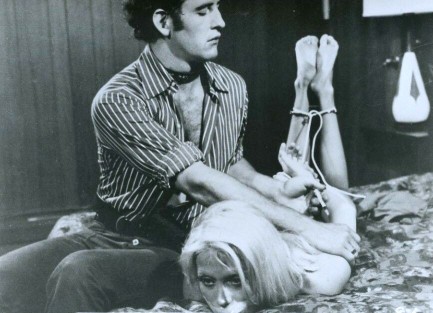   
 Early movie magazine celebrates a pantheon of Hollywood stars long gone. 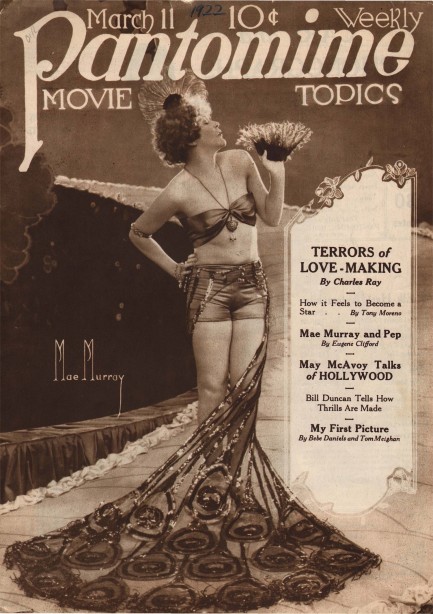
Above and below are the cover and a selection of pages from an issue of Pantomime magazine published exactly one hundred years ago, today in 1922, by New York City based Movie Topics, Inc. We don't share much printed material from the pre-1940 pulp years because it tends to be rare to find, a bit expensive to buy, and not as visually dynamic as what came afterward. Luckily, there's a selection of items like these on Archive.org, and that's where this particular discovery originated, part of a collection of eighteen issues available for free download.
There isn't much information available on Pantomime. The rise of Hollywood fueled a huge satellite industry of movie and celeb mags, and scores of them were short-lived. It's possible this one was in existence only during 1921-22, during the silent era. It's filled with celebrities whose names have faded from popular culture, such as cover star Mae Murray, who was known as “The Girl with the Bee-Stung Lips,” Betty Compson, who we've shown you before, Bebe Daniels, who starred in the first version of The Maltese Falcon, action megastar William Duncan, who appeared in one-hundred fifty movies and short features, and Bryant Washburn, who topped Duncan, accumulating well over three-hundred screen credits.
As you might imagine of a publication from 1922, there's problematic material, in this case an article purportedly written by Pantomime's office boy, Eustace Yodels, but in reality written by the editors in what they imagined was African American vernacular, filled with racist phonetics. Apparently the piece is part of a series, an assumption we make because the subhead says it's “another” discourse by Yodels. We've uploaded a snippet below, but if you ever need to do research on racist tropes in old magazines, pull this one off Archive.org and read the whole shameful thing for yourself.
Pantomime also published fiction—official, aknowledged fiction, unlike the above. This issue has Sign of the Trident, which is two chapters of Herbert Crooker's novelization of the Ruth Roland cinema serial White Eagle. For any visitors unfamiliar with the concept, serials were films shown one chapter per week in cinemas. They came on before the main features, and each chapter ended with a so-called cliffhanger. Pantomime was a weekly, so each week it published a fictionalization of what was showing in the movie house. All that for a cover price of ten cents. Inflation-wise that would be about $1.67 today. Not a bad value.
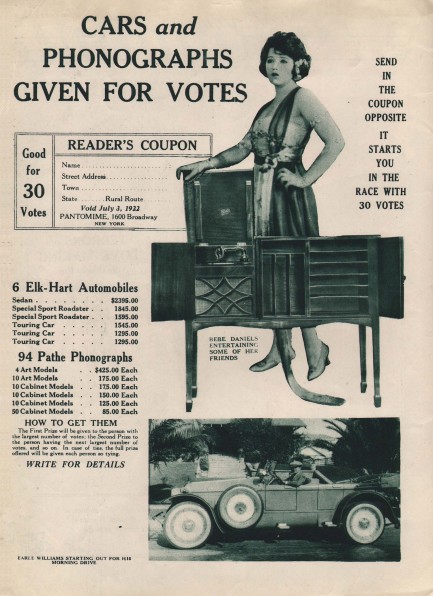 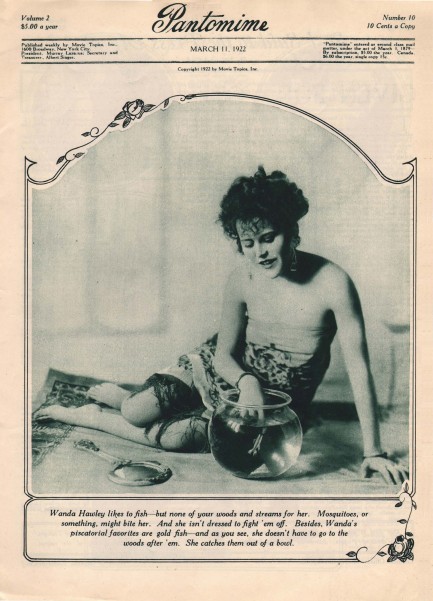 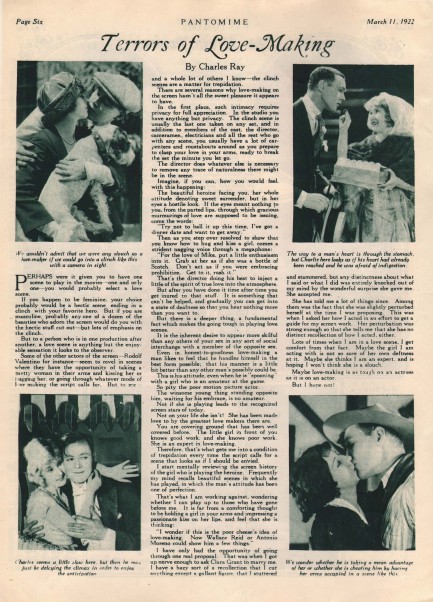 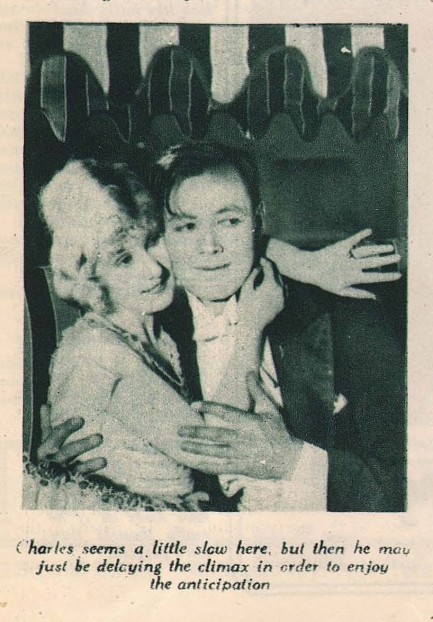 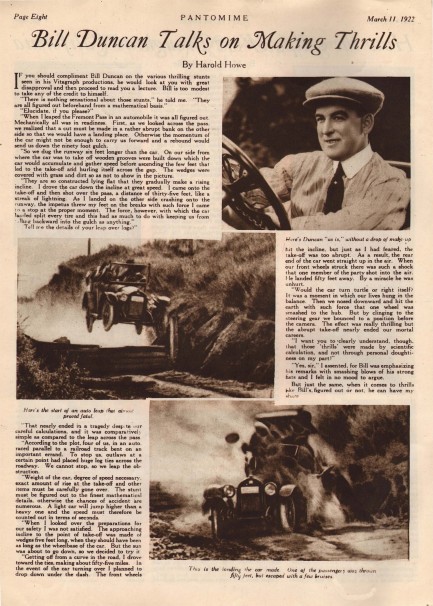  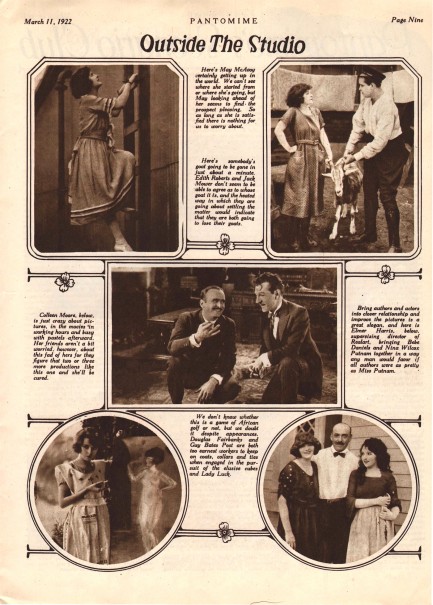 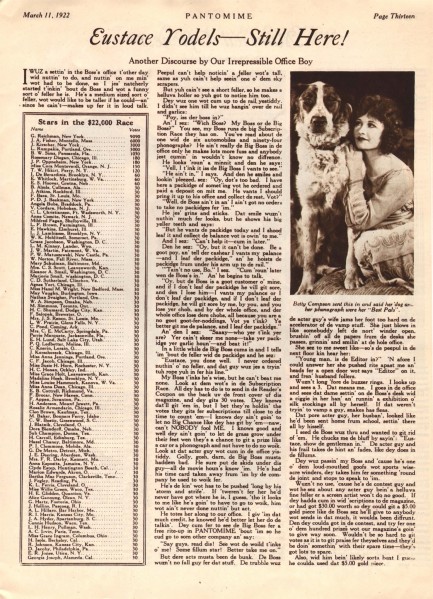 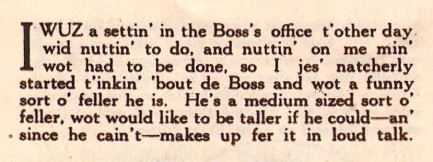 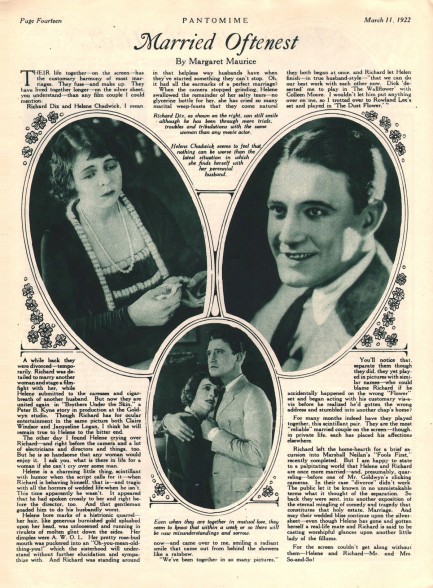 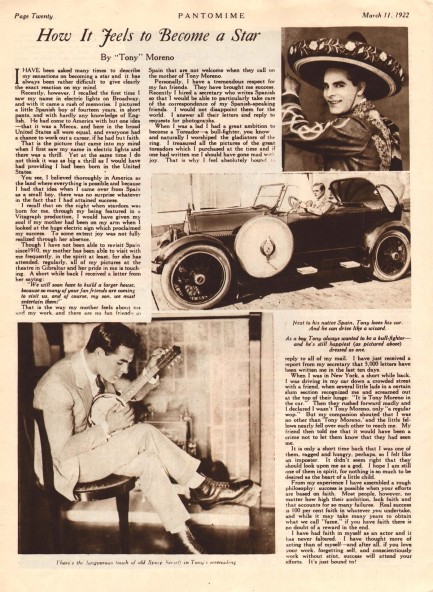 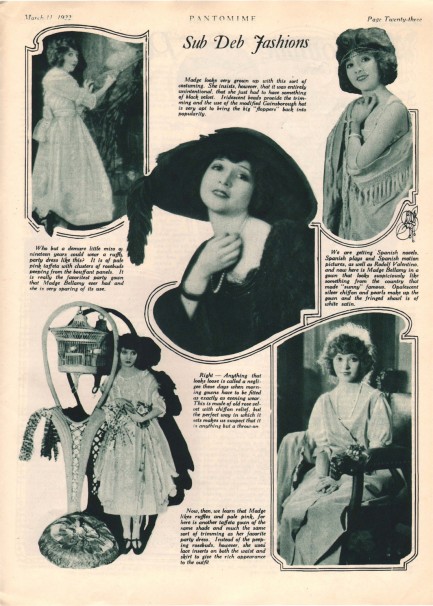 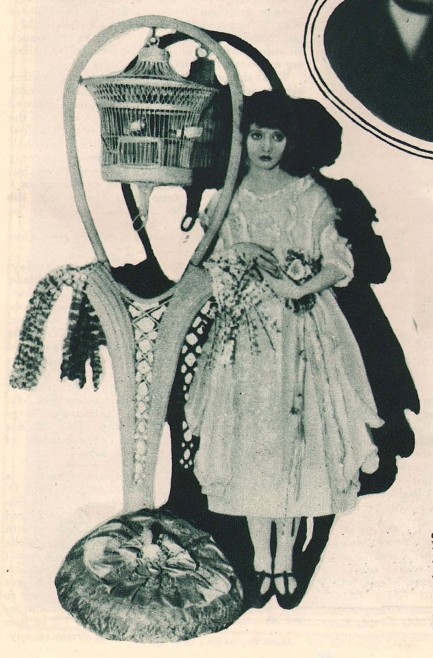 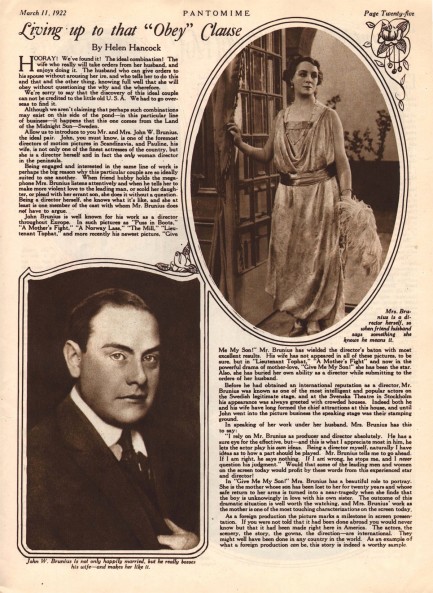 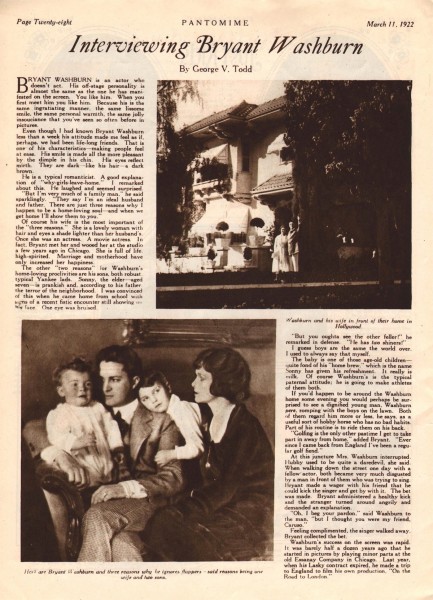 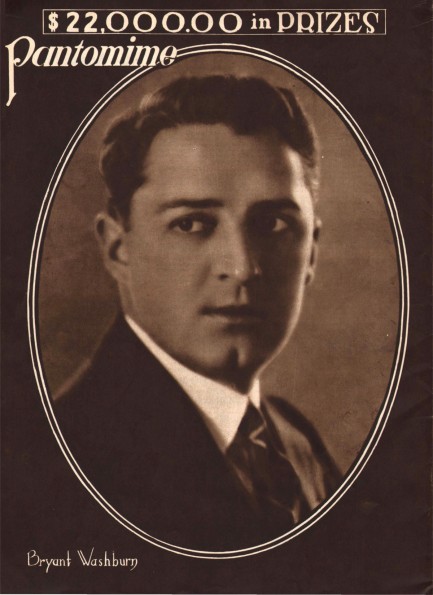
 Sorry, that was a mix-up in the ad. It's actually pay now love later. There's also an admin surcharge and a damage deposit. 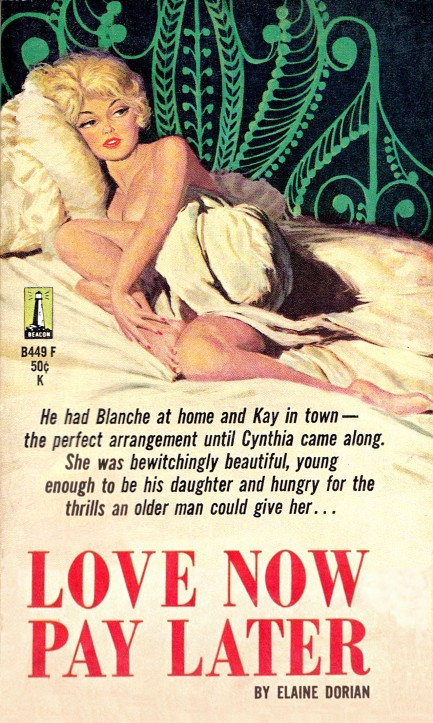
Elaine Dorian's 1961 novel Love Now Pay Later has more depth than usual for Beacon Signal sleaze fiction. She has a real feel for the setting and her lead characters, Ross and Gay, two people trying to find happiness while swept up in the fast paced worlds of publishing and politics in New York City. For both of them ambition is their undoing, though of different types—Ross will do anything for success, including throw away love, and Gay will do anything for love, including throw away success. Both lose their way, and both debase and publicly embarrass themselves, though again, in different ways. Dorian serves up strong anti-sex undercurrents, but her story basically works. We wouldn't call the book good, exactly, so much as better than average. But in vintage sleaze, that's good enough.
 |  |
|
 |

The headlines that mattered yesteryear.
1939—Five-Year Old Girl Gives Birth
In Peru, five-year old Lina Medina becomes the world's youngest confirmed mother at the age of five when she gives birth to a boy via a caesarean section necessitated by her small pelvis. Six weeks earlier, Medina had been brought to the hospital because her parents were concerned about her increasing abdominal size. Doctors originally thought she had a tumor, but soon determined she was in her seventh month of pregnancy. Her son is born underweight but healthy, however the identity of the father and the circumstances of Medina's impregnation never become public. 1987—Rita Hayworth Dies
American film actress and dancer Margarita Carmen Cansino, aka Rita Hayworth, who became her era's greatest sex symbol and appeared in sixty-one films, including the iconic Gilda, dies of Alzheimer's disease in her Manhattan apartment. Naturally shy, Hayworth was the antithesis of the characters she played. She married five times, but none lasted. In the end, she lived alone, cared for by her daughter who lived next door. 1960—Gary Cooper Dies
American film actor Gary Cooper, who harnessed an understated, often stoic style in numerous adventure films and westerns, including Sergeant York, For Whom the Bell Tolls, High Noon, and Alias Jesse James, dies of prostate, intestinal, lung and bone cancer. For his contributions to American cinema Cooper received a plaque on the Hollywood Walk of Fame and is considered one of top movie stars of all time. 1981—The Pope Is Shot
In Rome, Italy, in St. Peter's Square, Pope John Paul II is shot four times by would-be assassin Mehmet Ali Agca. The Pope is rushed to the Agostino Gemelli University Polyclinic to undergo emergency surgery and survives. Agca serves nineteen years in an Italian prison, after which he is deported to his homeland of Turkey, and serves another sentence for the 1979 murder of journalist Abdi Ipekçi. Agca is eventually paroled on January 18, 2010. 1957—Von Stroheim Dies
German film director and actor Erich von Stroheim, who as an actor was noted for his arrogant Teutonic character parts which led him to become a renowned cinematic villain with the nickname "The Man You Love to Hate", dies in Maurepas, France at the age of 71.
|

|
|

It's easy. We have an uploader that makes it a snap. Use it to submit your art, text, header, and subhead. Your post can be funny, serious, or anything in between, as long as it's vintage pulp. You'll get a byline and experience the fleeting pride of free authorship. We'll edit your post for typos, but the rest is up to you. Click here to give us your best shot.

|
|
















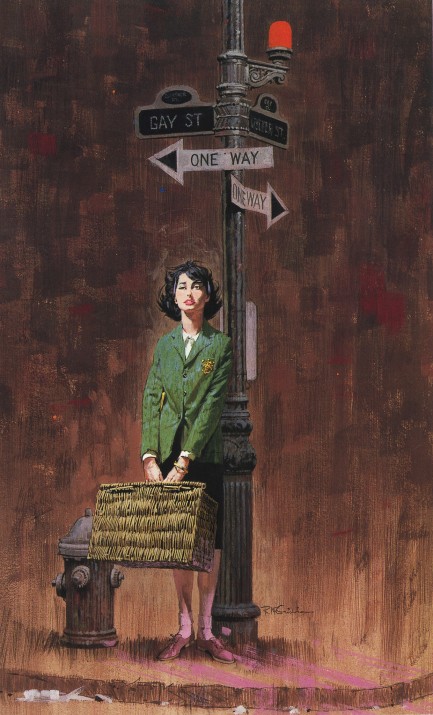


















 Like most burlesque dancers Noel Toy had several nicknames and alter egos, including the Chinese Sally Rand, but this promo image is signed: Ming Toi – The Silver Goddess. Toy/Toi was actually born Ngun Lee in San Francisco in 1918, and was a journalism student at UC Berkeley when she took a job dancing during the Golden Gate International Exposition, a Bay Area version of the World's Fair held in 1939. That decision changed her life.
Like most burlesque dancers Noel Toy had several nicknames and alter egos, including the Chinese Sally Rand, but this promo image is signed: Ming Toi – The Silver Goddess. Toy/Toi was actually born Ngun Lee in San Francisco in 1918, and was a journalism student at UC Berkeley when she took a job dancing during the Golden Gate International Exposition, a Bay Area version of the World's Fair held in 1939. That decision changed her life.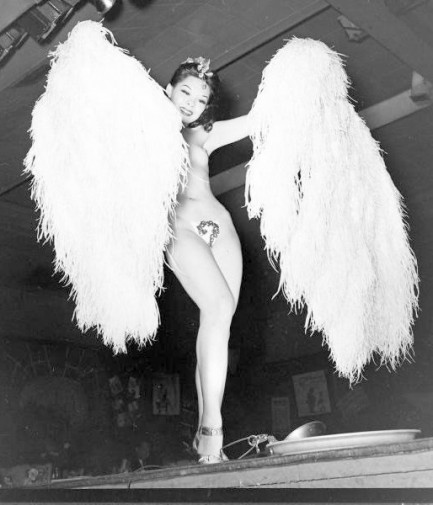
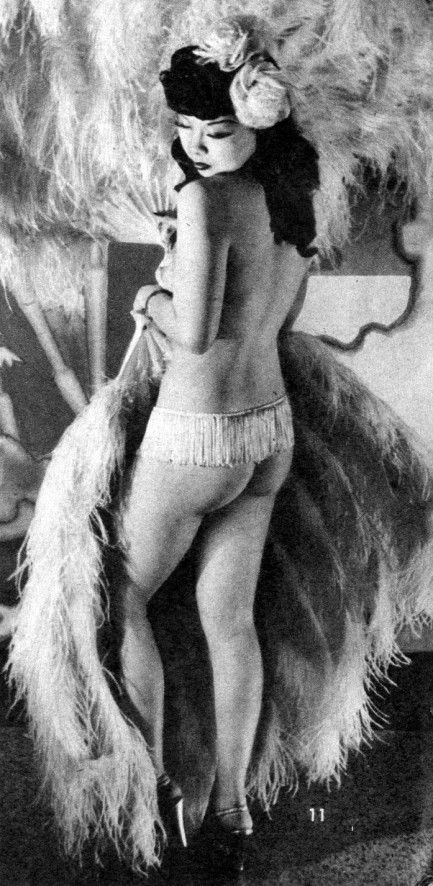




 Masseria was a careful guy. He traveled in an armored sedan. But it's hard to take care of business from behind plate steel and bulletproof glass, so when Luciano invited him to a meeting at Villa Tammaro that promised to tamp down intra-clan tensions and refocus everyone on Salvatore Maranzano, the real enemy, he took the chance. He went to the restaurant, and the confab must have gone cordially up to a point, because Masseria, Luciano, and a couple of other men began playing cards. But at some point Luciano excused himself from the table and Masseria was gunned down by a fearsome foursome of Albert Anastasia, Vito Genovese, Joe Adonis, and Bugsy Siegel.
Masseria was a careful guy. He traveled in an armored sedan. But it's hard to take care of business from behind plate steel and bulletproof glass, so when Luciano invited him to a meeting at Villa Tammaro that promised to tamp down intra-clan tensions and refocus everyone on Salvatore Maranzano, the real enemy, he took the chance. He went to the restaurant, and the confab must have gone cordially up to a point, because Masseria, Luciano, and a couple of other men began playing cards. But at some point Luciano excused himself from the table and Masseria was gunned down by a fearsome foursome of Albert Anastasia, Vito Genovese, Joe Adonis, and Bugsy Siegel.




































































































